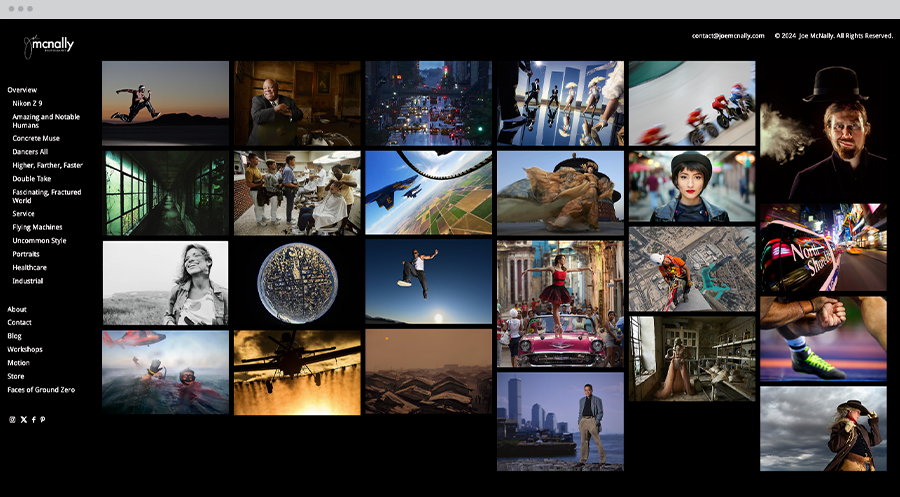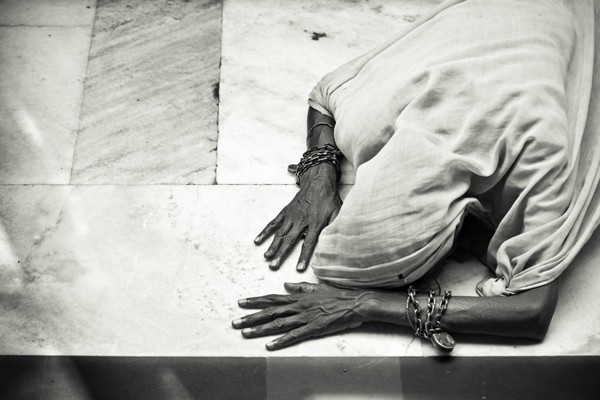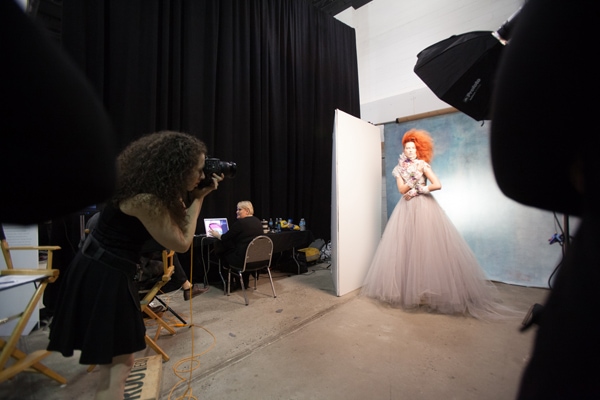Share
11 Awe-Inspiring Quotes from David Burnett, Joe McNally, Ami Vitale & More
In need of some inspiration for your photo business? In our most recent guide, The Inspiration Handbook: 50 Tips from 50 Photography Trailblazers,...

In need of some inspiration for your photo business? In our most recent guide, The Inspiration Handbook: 50 Tips from 50 Photography Trailblazers, we interviewed 50 award-winning photographers, recognized photo editors, and leading industry experts who share their best advice to help you grow your photo business, market your work, embrace personal projects, and reach the clients you want. We’ve compiled 11 of our favorite quotes from the guide, including insights from David Burnett, Joe McNally, Ami Vitale, David duChemin, Brooke Shaden, Peter Yang, and more. Have a favorite in the list?
1. David Burnett, Photojournalist
“As an emerging photojournalist in the early 70s, my focus was on trying to create stories for magazines to the exclusion of almost everything else. I wish someone had told me then that the most personally important pictures you’ll ever make are those about you and your life. I’m glad I had the chance to work for some great magazines, but I really miss those little everyday images, the ones that take place in and around your own life, which will never make the news. Don’t sell yourself short: photograph your own life, not just everyone else’s.”
2. Joe McNally, Photojournalist & Nikon Ambassador
“I strongly suggest that photographers make a huge effort to make appointments and show your portfolio to companies that are local to your area. I always associate getting jobs and doing work with getting on an airplane and going elsewhere, but there’s great opportunity in increasing your visibility to companies and clients in your own community, which are numerous.”

Photo by Joe McNally
3. Brooke Shaden, Fine Art Photographer
“I have a philosophy that if I put what I do out there with passion, someone else will feel that passion, too. On a platform like Facebook, for example, you need to be sincere and put your best foot forward. Understand your unique voice – because everyone has one – and present it. Whether you have one follower or one million, the best thing to do is to train yourself to be grateful for each individual supporter and never let your ego interfere.”

Photo by Brooke Shaden
4. Art Wolfe, Conservation Photographer
“In the beginning I was more familiar with the outdoor world than the fine art one, so I approached gear stores like REI, The North Face, and Eddie Bauer – lobbying for in-store space rather than in galleries. It didn’t take much convincing to allow me a little space on the walls. So, behind a rack of jackets there would be an Art Wolfe photograph. The visibility worked, and I started confidently pitching to editorial publications. Especially today, photographers need to think outside the box on how to get their work seen.”
5. Ami Vitale, Photojournalist & Documentary Filmmaker
“Perhaps one of the most important aspects of building your business is to develop a body of work on the subjects you care deeply about. I think one of the biggest mistakes photographers make is not having work that defines their interests and strengths. No one is going to hire you for what you say you like to do. You have to show them that you are capable of it first. For example, if you only take portraits for corporate clients, National Geographic will never hire you. So sometimes, it’s better not to accept every assignment and use that time to work on a project that you are passionate about and create that body of work that will get you future assignments.”
6. Peter Yang, Portrait Photographer
“To me, the first step in developing a style is through lighting. Especially when starting out, an aspiring photographer seldom has access to great subjects or great locations. Thoughtful, deliberate lighting can really help elevate your pictures. Find your style and stick to it. You don’t need to light everything exactly the same, but your portfolio should feel like a cohesive body of work. I don’t think developing a visual style happens overnight, and it’s often about trying everything you can and stripping away what doesn’t work. It’s a slow but gratifying process, and often times, someone will tell you they dig your style before you even know what it is!”
7. Alison Zavos, Founder & Editor-in-Chief, Feature Shoot
“Many photography blogs, including Feature Shoot, take submissions, so once a photographer is ready to put his or her work out there, they should start submitting! Keeping an updated blog, posting new work on Facebook, and staying active on Instagram are also important avenues for up-and-coming photographers to get noticed. I know curators who have found work for a gallery show via Facebook and photo directors who hired people based on the work they’ve showed on Instagram. Don’t underestimate these platforms!”
8. David duChemin, World & Humanitarian Photographer
“I’ve always found more success concentrating on personal projects and then leveraging those into shareable work (books, blog posts, social media, etc). It’s taken me years to recognize, but that’s what grows my audience and brings in new work and new opportunities. So heading into this year, my marketing budget for time and money is all going into my new work in the Canadian arctic and continued work on my humanitarian projects in Africa.”
9. Elizabeth Krist, Senior Photo Editor, National Geographic
“The most important feature I look for in a photographer is dedication to long-term projects. Another major plus is having access to rare events or hidden worlds, and nowadays, expertise in video as well. Photographers who happen to focus on needed specialties—like archaeology—have a better chance of attracting my attention, too. Securing a referral before you contact me, and putting that in the email’s subject line, is another good way to reach out to me. Underlying everything else, I would say the most crucial quality is integrity.
10. Ken Kaminesky, Lifestyle & Travel Photographer
“Working for free is something I consider a major mistake. If you work for any client for free, they will always expect you to do so and you’ll be labeled as the ‘free’ or ‘cheap guy’. As soon as those clients have a budget to spend on photography, they will go elsewhere because they’ll think that they can get someone better.”
11. Lindsay Adler, Fashion & Portrait Photographer
“Rejection isn’t failure. It is a chance to learn and to grow. Rejection seems extremely difficult because our work is so personal to us, but thats exactly what makes it so brilliant. Not everyone will like your work— and not everyone is supposed to. Know when to take critique and when to ignore it!”
Want more inspiration? Download The Inspiration Handbook: 50 Tips from 50 Photography Trailblazers.









